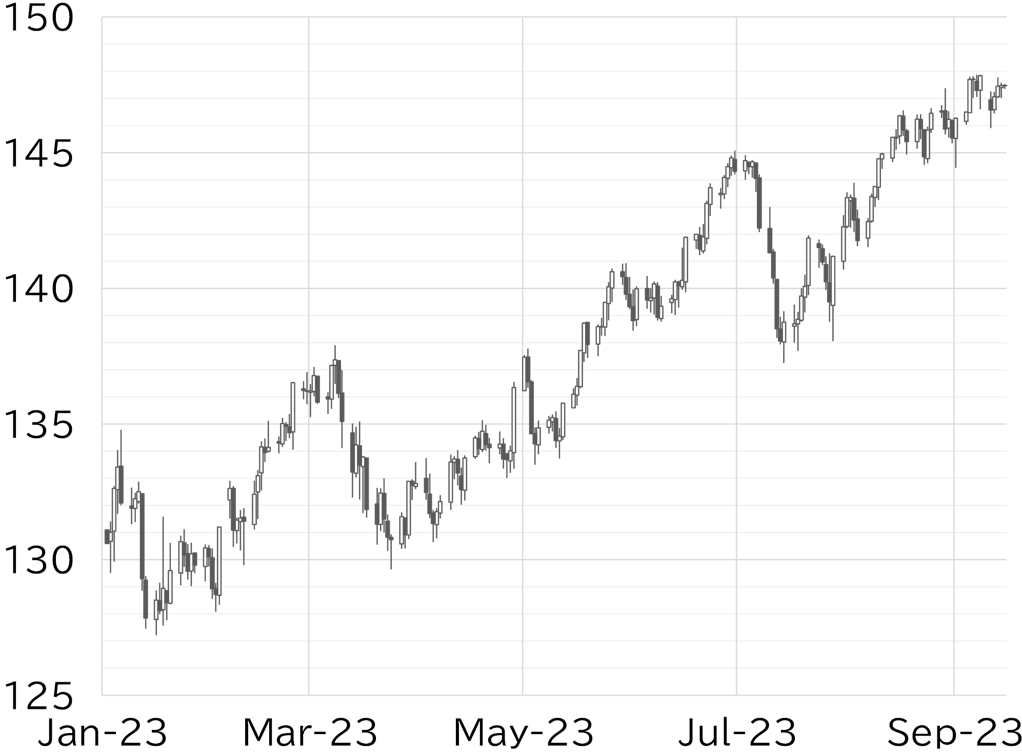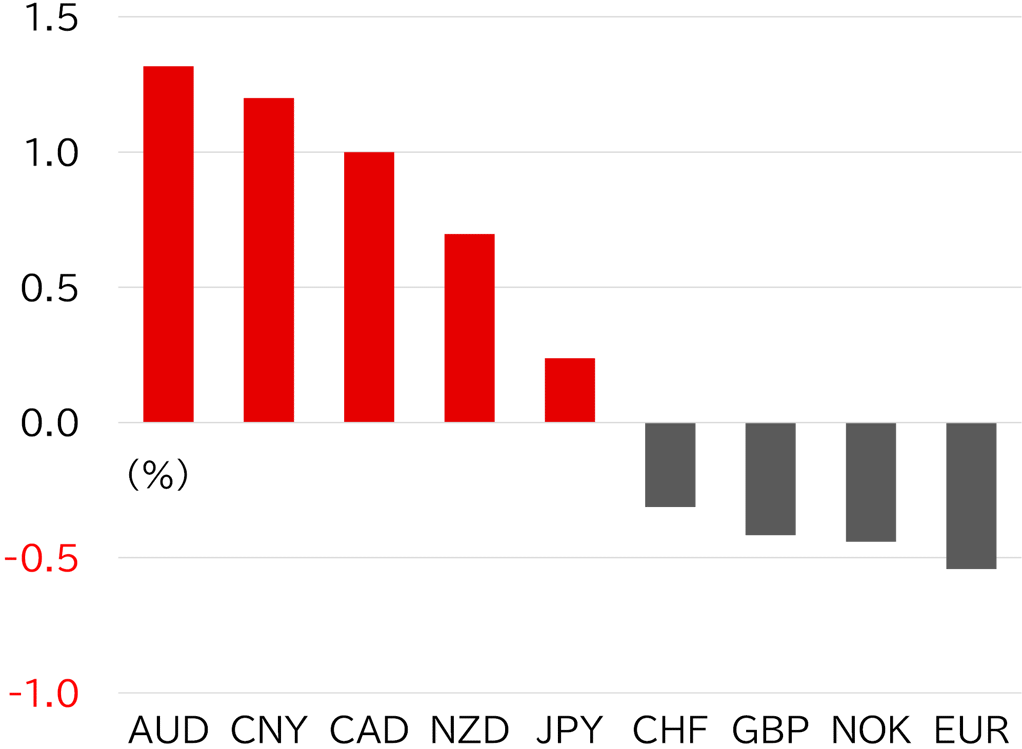Week in review
In an interview with the Yomiuri Shimbun published on 9 September, BOJ Governor Kazuo Ueda said that exiting the negative interest rate policy was an option. The USD/JPY pulled back by over 1 yen at the start of the week in response, falling to 147.15 in Tokyo trading hours, and then continued to decline intermittently to 145.91. The USD/JPY recovered to around 147 when the Europeans entered the market but fell back below 146.50 at times. The pair continued to rise the following day (12 September) once the reaction to Governor Ueda's interview ran its course. It recovered to the 147 level on the back of a rise in oil prices and UST yields, mainly in the belly. However, the USD/JPY became top-heavy at below 147.50 ahead of the CPI announcement on 13 September. CPI growth beat market expectations on a YoY basis and core growth was higher than expected on a MoM basis. Initially, the dollar reacted by strengthening and the USD/JPY rose to 147.77, but the details of the report were viewed as mixed, which held back upside. The pair remained top-heavy on 14 September, falling to around 147 in Tokyo trading hours. The USD/JPY rebounded in European trading hours without a fall below 147, then rose to around 147.50 due to better-than-expected US retail sales and PPI data but found resistance at this level and was trading in the low 147 range as of writing this report (Figure 1). The AUD and CAD, which are considered commodity currencies, strengthened this week due in part to a rise in oil prices. Meanwhile, the euro declined after the ECB signaled an end to interest rate hikes, and European currencies weakened overall (Figure 2).
FIGURE 1: USD/JPY

Note: Through 12:00pm JST on 15 September
Source: EBS, Refinitiv, MUFG
FIGURE 2: MAJOR CURRENCIES' RATE OF CHANGE VS USD THIS WEEK

Note: Through 12:00pm JST on 15 September
Source: Bloomberg, MUFG
FOMC to hold off on rate hikes but maintain hawkish stance
Key economic indicators such as the CPI and retail sales were announced this week during the blackout period ahead of the 19-20 September FOMC meeting, none of which ran contrary to suggestions from Fed officials that rate hikes will be put on hold. The market will be watching the extent to which the FOMC statement and comments from Fed Chair Jay Powell's press conference stress the possibility of one more hike within the year, and whether the summary of economic projections (SEP) shows an upward revision in projections for the federal funds rate from next year. Recent economic data suggests the Fed is likely to raise its forecasts for growth and lower its inflation forecasts. We do not expect the Fed to abandon its outlook for one more hike within the year but think it will give itself wiggle room on the timing (whether it will hike at the November or December meetings) by saying its decision will be data dependent. Meanwhile, looking out to policy settings for next year, we see a growing view that the Fed will start cutting rates later than the market had expected. In this regard, we see the possibility that the breakdown of the dot plot could be revised upward even if the median forecast for a combined 100bp reduction remains unchanged. We expect the contrast between this and the ECB's recent suggestion that it plans to stop increasing interest rates to buoy the dollar.
BOJ struggling with communication at meetings
The BOJ's monetary policy meeting on 21-22 September is likely to be live this time too. We do not expect the BOJ to change or revise its policy settings, but it could tweak its stance through changes in the monetary policy statement. A recent speech by Deputy Governor Shinichi Uchida led to widespread expectations that the YCC could be abolished but that it would still be some time before the BOJ pulled the plug on negative interest rates. Governor Ueda's interview last weekend therefore grabbed the spotlight because it has forced the market to consider the possibility of early withdrawal from the negative interest rate policy. In addition, on the topic of wage increases in FY24, which the BOJ has set as a condition for policy normalization, Ueda said there was some possibility that the BOJ could get enough information and data about this by the end of the year. As a result, expectations for policy normalization are gaining momentum in financial markets, especially among overseas investors. Even if this is not the case, recent comments by BOJ officials have focused on the risk of inflation increasing beyond the BOJ's forecasts, which seems out of tune with the wording of the statement on monetary policy that "the BOJ will not hesitate to take additional easing measures." We would therefore not be surprised to see some moves toward normalization, such as removal of the overshooting commitment (since conditions for this have already been met) and a reduction in the amount of JGB purchases through ‘rinban’ operations. An absence of any such moves could dampen expectations that the BOJ will normalize policy at an early date, which could encourage the yen to weaken further. On the other hand, leaving such forward-looking expectations as is could constrain the BOJ in future monetary policy decisions. Bloomberg reported that there is a gap between Governor Ueda's comments and how the market interpreted the remarks, citing "people familiar with the matter." We expect Ueda to again layout his views and try to rein in expectations at his press conference following the monetary policy meeting.
Trends in oil prices also need watching
Next week's FOMC and BOJ meetings will be major events, but we also need to keep an eye on the recent surge in oil prices and Japan's August trade statistics, which will be announced on 20 September. Higher oil prices work to weaken the yen because a rise in the value of imports worsens the trade balance. WTI has risen to the USD90/bbl level, the highest level since November 2022. Expectations of a further worsening of the trade balance could pressure the yen to weaken if August trade data show imports or the trade deficit above market expectations.
Forecast range
USD/JPY: 145.00 - 149.00

